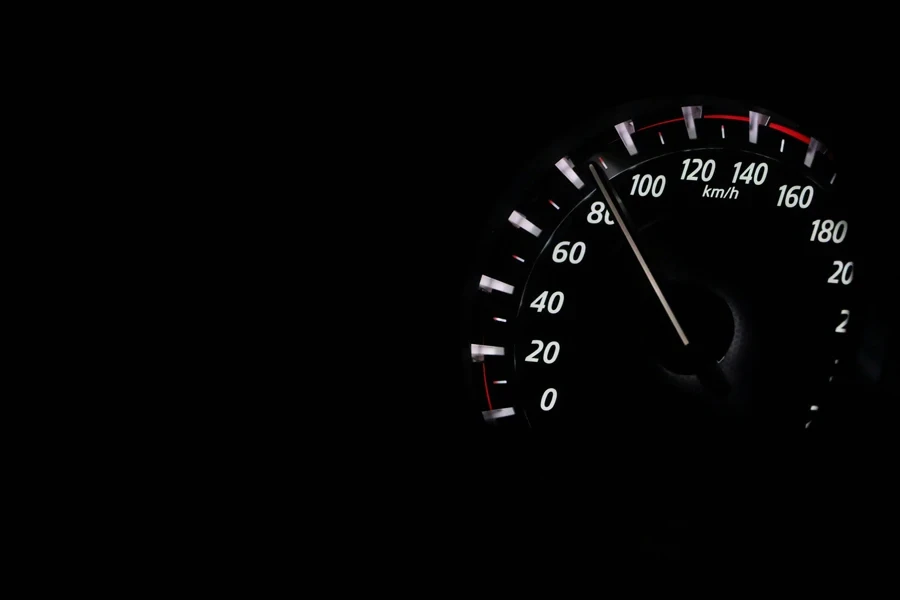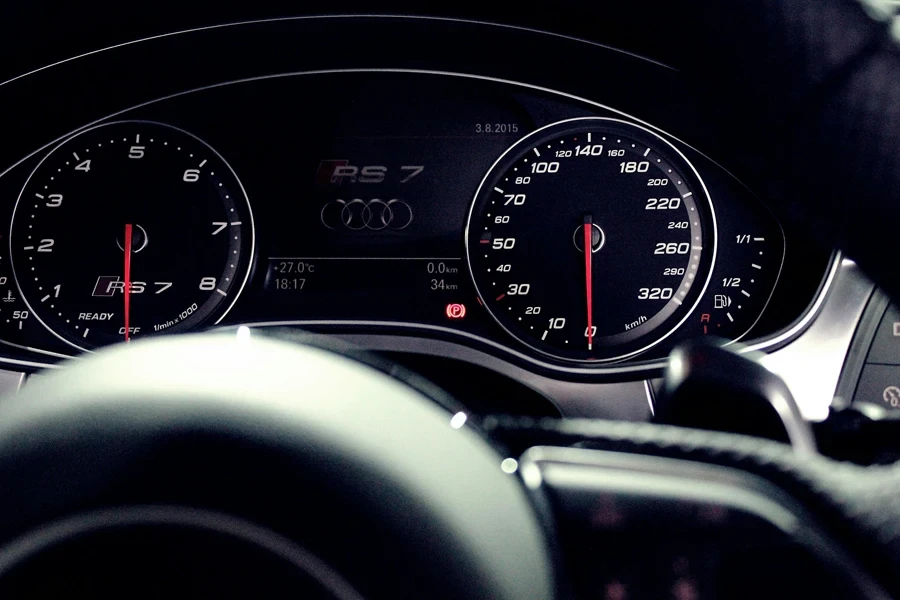Table of Contents
● Introduction
● Market overview
● Different Types of auto sensors
● Conclusion
Introduction

Modern car technology heavily relies on auto sensors to improve safety and efficiency while enhancing comfort for drivers and passengers alike. These advanced devices monitor and respond to various situations to ensure that vehicles perform optimally and remain well-protected. Thanks to the developments in sensor technology, cars now come equipped with features that assist in navigation, prevent collisions, and manage emissions effectively. The expanding auto sensor market reflects the increasing demand for safer and more fuel-efficient vehicles. As the automotive industry progresses, incorporating cutting-edge sensors will pave the way for innovations in vehicle technology.
Market overview

Market scale and growth
The worldwide sensors market is expected to grow substantially in the coming years. Expanding from $30.68 billion in 2023 to $62.2 billion by 2028 with a Compound Annual Growth Rate (CAGR) of 15%. This surge is primarily attributed to the growing demand for driver assistance systems (ADAS) and the increased production of electric vehicles (EV) and hybrid vehicles (HV). As per a report by MarketsandMarkets, strict government regulations aimed at enhancing vehicle safety and emissions standards are also drivers behind the market expansion.
Market share
The market is divided based on sensor types like temperature, oxygen, position, and pressure sensors. Vehicle types, including passenger cars and commercial vehicles, such as light and heavy ones also segment it. Across different regions, Asia Pacific is anticipated to show the most growth.
Key trends
The increasing need for ADAS and self-driving cars is fueled by sensor technologies like LiDAR and radar being used in them. Integrating IoT and AI into applications improves the abilities and features of sensors. The transition to vehicles (EVs) and hybrid vehicles (HVs) is also influencing the adoption of sensor technology, as sensors are now required to keep track of important factors such as battery condition and charging status. These shifts stem from progress in sensor technology and rising consumer expectations for safety and effectiveness, shaping the landscape of automotive sensors market trends.
Different types of auto sensors

Oxygen sensors
Car O2 sensors play a role in a vehicle’s emission control setup and are known as oxygen sensors among car enthusiasts and mechanics alike! Usually found in the manifold region of the vehicle’s engine bay area, these sensors keep tabs on the oxygen levels present in the exhaust fumes, helping the engine control unit (ECU) fine-tune the air-fuel mixture for optimal performance! The oxygen sensors feature a component crafted from zirconia or titania materials that create a voltage differential by comparing the oxygen concentration within the exhaust emissions to that in the surrounding atmosphere.
When the mixture of air and fuel is more fuel and less oxygen), the sensor generates a lower voltage; when it is lean (more oxygen and less fuel), the voltage increases instead of decreasing compared to how it was before when richer. This ongoing feedback allows the Engine Control Unit (ECU) to adjust fuel injection and ignition timing to achieve combustion while reducing emissions and enhancing fuel efficiency. In today’s vehicles, you will find multiple oxygen sensors positioned before and after the catalytic converter to assess how efficiently the catalytic converter works to decrease harmful emissions.
Mass Air Flow (MAF) sensors
Mass Air Flow (MAF) sensors play a role in calculating the air intake into the engine. A critical element in deciding the right fuel injection for efficient combustion processes. This sensor is typically placed between the air filter and the intake manifold. Often, it uses a heated wire or film to gauge airflow. As the air moves over this element, it cools down, leading to a shift in electrical resistance levels. The electronic control unit (ECU) keeps track of the electricity required to control the wire’s warmth. Figure out the amount of air flowing into the engine using this information. Accurately measuring air mass is crucial for the ECU to finely adjust the air-fuel ratio for optimal engine performance, which helps reduce emissions and avoids stalling or uneven idling. Advanced MAF sensors also consider changes in temperature and pressure to offer even more accurate details to the ECU.
Pressure and vacuum sensors
Pressure sensors are parts found in vehicles with many uses in different systems, such as the engine and transmission systems and the braking and HVAC systems (heating and air conditioning). These sensors usually use piezo elements that change their resistance when pressure shifts happen to create an electrical signal accordingly. One instance is the Manifold Absolute Pressure (MAP), which monitors the air pressure inside the manifold to help calculate engine load and control fuel delivery and ignition timing adjustments. This device enhances engine performance and fuel efficiency in various situations. Vacuum sensors are typically employed in emission control setups to oversee vacuum levels within the intake manifold or other engine parts. They help guarantee the optimal operation of systems such as EGR and brake boosters that depend on accurate vacuum levels for efficient functioning.
Proximity sensors
Today’s automobiles cannot operate effectively without proximity sensors, which are important for safety and comfort. Some have parking aids and systems that identify spots and avoid collisions. These sensors can identify objects near the vehicle with the help of different technologies involving ultrasonic signals and radar or lidar installations. Ultrasonic sensors transmit frequency sound waves that reflect from the nearby object. They then determine the distances of these objects by figuring out the time taken for the echoes to return.
These sensors are commonly applied in parking aid systems to assist drivers in perceiving obstacles while navigating speeds. Rather than relying on light to capture images of objects and measure their velocity and distance to the car, radar sensors capture objects using radio waves. The relevance of this technology is in features, like cruise control and automatic emergency braking if an obstacle is detected on the rail. That means the system must detect moving objects with high precision and provide the necessary reactions. Lidar sensors remain limited in use within vehicles due to cost factors. However, they offer the best solution for creating a three-dimensional map of the environment. That makes them ideal for the sophisticated levels of self-driving features.
Vision sensors
Vision sensors have an application in the contemporary ADAS as a part of sophisticated vehicles. These sensors employ CMOS (Complementary Metal Oxide Semiconductor) or CCD (Charge Coupled Device) technology to capture images of the car’s surroundings. Subsequently, more complex calculations are made on these images to recognize various other features, such as lane markings, traffic signs, pedestrians, and other cars. Combining multiple sensors in a single vision sensor makes safety features such as lane departure warnings and automatic emergency braking in cars safer. They also incorporate features such as cruise control and traffic sign recognition.
Some sophisticated systems offer a 360-degree view, especially for parking and low-speed operations. As the tech networks advance, vision sensors have been integrated with machine learning and artificial intelligence to increase accuracy and reliability in various driving conditions. This integration will pave the way for the appearance of autonomous vehicles shortly.
Coolant and temperature sensors

Coolant and temperature sensors are essential for managing the engine temperature using thermistors that alter resistance based on temperature changes. These sensors are strategically positioned in areas like the engine block and radiator to monitor the coolant temperature. The ECU uses information from these sensors to control the engine’s cooling system by adjusting cooling fans and thermostats and modifying the engine’s operational settings to avoid overheating. When the temperature of the coolant goes beyond levels in a car’s engine system, the electronic control unit (ECU) may turn on warning lights on the dashboard, switch on the cooling fans, or lower engine output to avoid any harm. In cars, sensors for temperature also keep an eye on other vital systems’ temperatures like the transmission, battery, and exhaust gases. This guarantees the car runs at ideal temperature levels for efficiency and durability.
Knock sensors
Knock sensors play a role in identifying engine knocking. A situation where the fuel mixture ignites too early in the combustion chamber and causes harmful vibrations. When subjected to mechanical stress, the sensors produce an electric voltage from vibrations. They are strategically placed in the engine block or cylinder head to pick up these vibrations. When a vehicle’s sensors detect knocking sounds from the engine during operation, the Engine Control Unit (ECU) automatically adjusts the ignition timing. Sometimes, the air-fuel mixture is adjusted to prevent any further knocking. This helps safeguard the engine from damage caused by excessive knocking. Having properly working knock sensors is essential to ensure that the engine runs efficiently and lasts longer while improving performance by enabling it to run at its peak with advanced ignition timing without any knocking issues.
Speed and voltage sensors
Monitoring and controlling a vehicle’s electrical systems rely heavily on speed and voltage sensors as key elements. For example, speed sensors in the lock braking system (ABS) utilize magnetic reluctance or Hall effect technology to gauge the wheel rotation speed. This information is then transmitted to the ECU (Electronic Control Unit), which modulates brake pressure to avoid wheel lockups when sudden braking occurs, thus improving safety and vehicle handling. Speed sensors play a role in the transmission by keeping track of gear position and vehicle speed to ensure seamless gear changes and optimal transmission performance. On the contrary, voltage sensors oversee voltage levels in the system to guarantee the proper functioning of key components such as the alternator, battery, and electrical accessories. These sensors contribute to maintaining the health of the vehicle’s electrical system by identifying potential problems, like overcharging, undercharging, or faulty parts, and allowing for prompt maintenance to prevent electrical malfunctions.
Conclusion

Car sensors play a big role in how modern vehicles work and improve everyday operations by increasing safety and efficiency while boosting overall performance levels. They offer vital information that helps cars adjust to different situations to guarantee they function optimally and safeguard both the vehicle and its occupants. As technology advances, the enhancement of even more advanced sensors, especially those designed for ADAS and self-driving cars, will keep pushing for new ideas in the car industry, such as the fusion of AI. IoT will also broaden the capabilities of sensors, making way for intelligent and interconnected vehicles.




